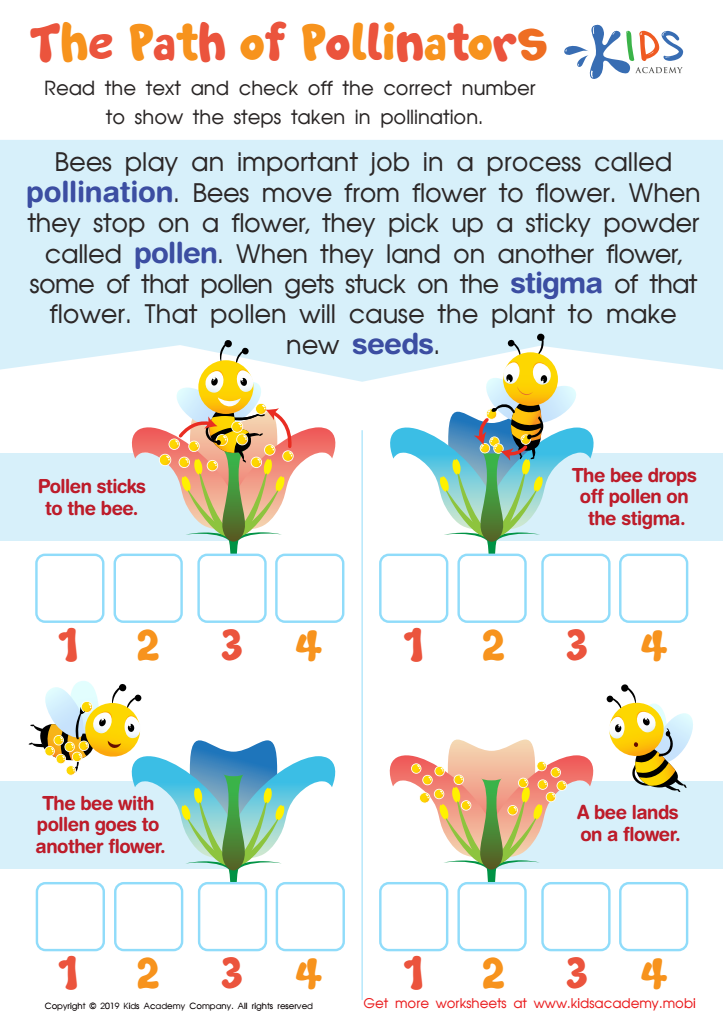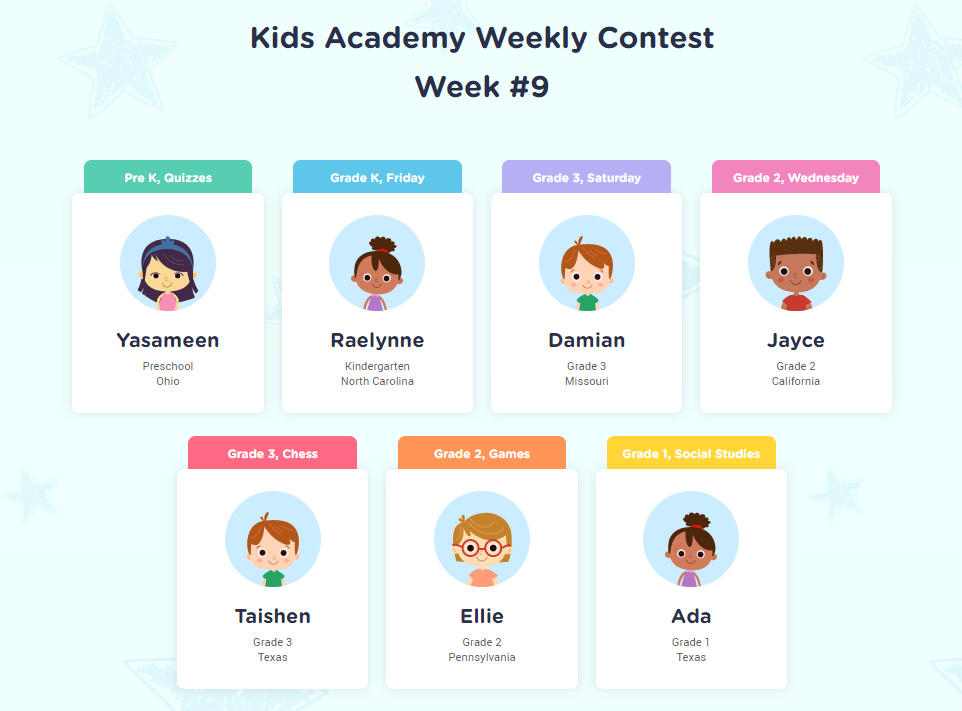Recognizing pollinators Worksheets for Kids
1 filtered results
-
From - To


The Path of Pollinators Worksheet
Question/Answer
How to test a Grade 2 student’s Recognizing pollinators skills?
To test a Grade 2 student's recognizing pollinators skills, provide them with images or real-life observations of various insects and animals, such as bees, butterflies, birds, and bats. Ask them to identify which ones are pollinators. You can also use matching exercises, where students match pictures of pollinators with the plants they are known to pollinate.
How to train the Recognizing pollinators skill in Grade 2 students learning about Plants and Animals?
To train Grade 2 students in recognizing pollinators, introduce them to various pollinators such as bees, butterflies, and birds through colorful pictures and videos. Engage them in outdoor activities like a garden visit to observe and identify these pollinators in action. Use interactive games and crafts focused on matching flowers with their pollinators to reinforce learning in a fun way.
What are some effective activities to train students’ Recognizing pollinators skill when teaching them about Plants and Animals?
Effective activities for teaching students to recognize pollinators include setting up a pollinator garden for hands-on learning, organizing scavenger hunts to identify pollinators in nature, using flashcards with images and information of common pollinators, engaging in classroom discussions and presentations on the roles of different pollinators, and incorporating arts and crafts projects that visualize pollination processes and the diversity of pollinator species.#$%
 Assign to the classroom
Assign to the classroom











